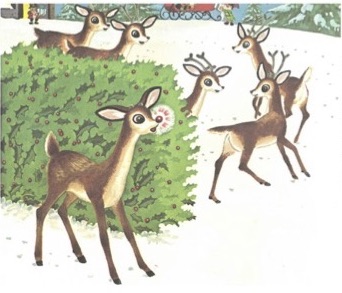Arctic reindeer have unusual eyes and vision. In contrast to most mammals, reindeer can see ultraviolet light, which is invisible to us. They also have a reflective tissue in the eye that changes from a golden color during the summer months to a deep blue color during the winter months. Together, these special traits help reindeer see plant foods or predators in the snow, especially during the winter, when daylight in the Arctic is dim and purplish. A problem with being able to see purples and blues really well is that these colors are practically invisible in fog. Red light travels best in fog, and it follows that reindeer, more than other mammals, would benefit from a nose that produces red light. At least one reindeer is reported to have a luminescent (glowing) nose that operates well under foggy conditions. The goal of this paper is to estimate the redness of this nose and to explore its advantages and disadvantages.

